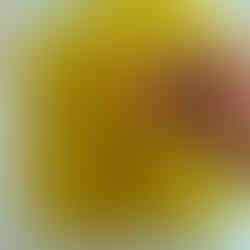Making Watercolor Paints from Lake Pigments
- Alison Webb

- Jul 28
- 3 min read
Once you have made a lake pigment (How to Make a Lake Pigment), you can use the resulting pigment to create a watercolor paint.
Working with Dry Pigment
Once your pigment has dried, you will want to grind it in either a mortar and pestle or a small coffee grinder dedicated to pigment use. This step will reduce the amount of work required to mix your paint.
Working with Wet Pigment
You do not have to wait for your lake pigment to dry completely. The only caveat to this method is that you can not accurately calculate the amount of binder needed for your paint due to the uncertain amount of water present. With practice, you can get your estimate pretty close. I prefer working with dry pigments for this reason.

Watercolor Binder
To make a watercolor paint, you will mix your lake pigment with a binder. Without a binder, your paint could be brushed off the paper (like a chalk pastel). To make a watercolor paint, our goal is to use a binder that will keep our pigment on the paper while also being water-soluble, allowing us to rework the paint. Gum arabic, sap from the acacia tree, is my top choice. Other saps can be used, but may contribute an undesirable color, sheen, or consistency to the paint.
You can find my gum arabic watercolor binder recipe here. You can also purchase premade binders. Many of these are gum arabic-based, but may also contain additional ingredients. I like the Winsor & Newton Watercolor Medium.
The amount of pigment and binder you use may require some experimentation to determine the optimal ratio. If you add too much binder to your pigment, your paint may be sticky, glossy, and lift from the paper too easily. If you add too little binder, your pigment will crack when dry, appear dull, and not adhere well to the paper.
When testing a new pigment or binder, I mix several different ratios, let them dry, and determine which one works best. If your goal is to produce the highest-quality paint, do this for yourself. Otherwise, try out my starting ratio for your first paint, and then adjust based on the qualities you observe (i.e., if it cracks when dry, add more binder next time, if it's sticky, add less).
Mulling Paint
To create a high-quality paint, you will want to use a glass slab and a muller to mix your paint. This is essentially a flat mortar and pestle, and it is the best way to disperse pigments without incurring thousands of dollars in professional equipment costs.
You will also need a palette knife for gathering the paint and containers to store the paint.
To make paint:
Add 1/2 tsp dried pigment
& 5 mL watercolor binder to the center of the glass slab
Mix with a palette knife
Use a glass muller to spread the solution over the glass slab
Move the muller in a fluid motion over the glass slab to spread out the paint
Continue for several minutes, scraping the paint back to the center when needed
Periodically test the paint by brushing it onto paper with a wet paintbrush. You are checking for smoothness and the absence of graininess
A small amount of water can be added if the solution becomes too thick or sticky. The water will evaporate without altering the consistency of the final paint.
If you experience suction between the muller and the paint, break the suction by prying your palette knife under the edge of the muller. You can prevent this by spreading your pigment evenly over the entire surface of the glass slab. If suction continues to be a problem, you may have too much paint for your slab.
Once you are satisfied with the consistency of your paint, gather it with the palette knife and transfer it to a paint pan to dry.
Storing Paints
Allow your watercolor paints to dry before storing. If allowed to remain wet in a closed container, mold growth may occur. Once dry, paints can be stored as you like.
Lake pigments have moderate lightfastness, meaning they will fade with exposure to light. This is true of the dried pigments and the final paints. Ideally, store your paints and paintings out of direct sunlight. To learn more about pigment lightfastness, check out this tutorial (Lightfastness of Natural Pigments).























Comments